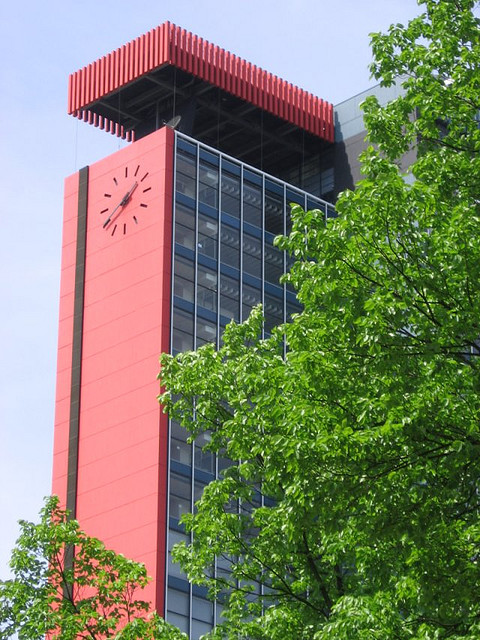More than few times this winter, we’ve been blown away near the EEMCS building. Why is that? It’s the Venturi effect.
You’ve been there. Biking past the 3mE faculty, you hold your breath before you charge past the EEMCS building on a windy day.
Things go fine until the wind pushes you sideways, and pedaling with all your might doesn’t move you a single centimeter forward. Fighting the wind is a reality of winter. But why does it get so violent around the EEMCS building? It’s the Venturi effect.
It’s so windy because the space around the EEMCS building is much narrower than the rest of the wide, open spaces around campus. The more constricting the travel space, the faster the wind must travel in order to satisfy the Continuity Equation of fluid dynamics. Because the wind’s velocity picks up, the air pressure goes down to conserve kinetic energy. That’s the Bernouilli priniciple. These changes in velocity and pressure, in response to travel space size, are together called the Venturi effect.
Chalk it up to the EEMCS building’s vastness to facilitate the Venturi effect. The EEMCS building is made up of two large structures. The pavilion, which runs 240 meters along the Mekelweg, and the tower, which stands at 90 meters tall. Only one other edifice is taller than the EEMCS tower: the 109-meter, lopsided Nieuwe Kerk in the center of Delft.
The Delft Architecture Guide calls the EEMCS building the “icon” of TU Delft. It’s no wonder, since it’s the first thing students see as they arrive at Central Station and catch a glimpse of the conveniently positioned clock on its westward face. But when it was built in 1969, its height gave EEMCS researchers the advantage of using antennas that were placed so high up.
One windy day, the Venturi effect made it impossible for Delft-made Senz umbrellas to hold their shape.
In a 2009 storm, strong winds pushed a biker onto the Mekelweg and right into a car.
But not all days are so windy that you can’t enjoy what the faculty has to offer. A March 2013 introductory video of the EEMCS faculty follows the path of a student who finds herself transported within Delft between the city’s two tallest buildings. She spots the EEMCS building from the Nieuwe Kerk, as a beam of energy sends her a signal that takes her on a trip through virtual reality. (Oddly enough, the video says how tall the Nieuwe Kerk is but never mentions the height of the EEMCS building.)
–> Read also: How trees can help mitigate the notorious EEMCS storms



Comments are closed.